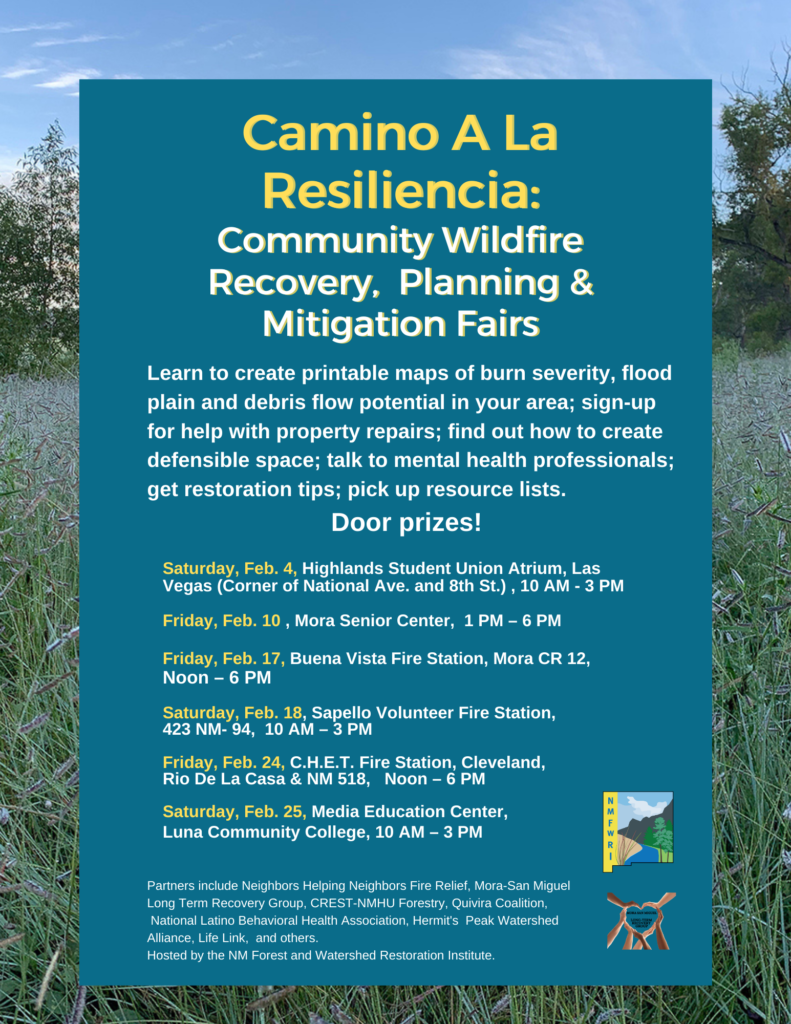Series of six open houses aimed at helping those who are still recovering from the Hermit’s Peak/Calf Canyon Fire prepare for the next fire and flood season.
Families and communities are still recovering from the historic fire that swept across portions of four Northern New Mexico counties in 2022. Recovery will take years. In the meantime, the area remains at risk of new floods and fires.

The burn scar left steep slopes vulnerable to soil erosion carrying more damaging sediment and debris. Plus, within the 534 square miles of mountains and valleys that burned in the Hermit’s Peak/Calf Canyon Fire there is still a lot of green – trees, grass, and shrubs vulnerable to more fires.
The Forest and Watershed Restoration Institute, working with partners, will host a series of fairs called Camino a la Resiliencia: Community Wildfire Recovery, Mitigation, and Planning. Organizations will be on hand to provide tips, resources, and information to help with ongoing recovery, preparing for the next fire and flood season, creating defensible space around properties, mental health services, land restoration, sign-ups for volunteer work crews and unmet needs issues, and more. The Institute’s staff will be showing people how to generate printable maps showing the fire’s burn severity, the flood plain and the debris flow potential around their properties. In addition, the Institute will have a table with information and interactive models where the public can learn how to reduce wildfire risks on their properties.
